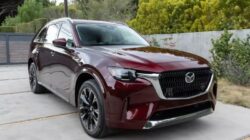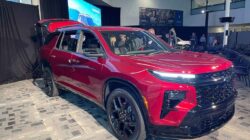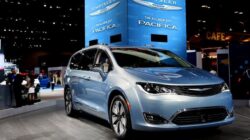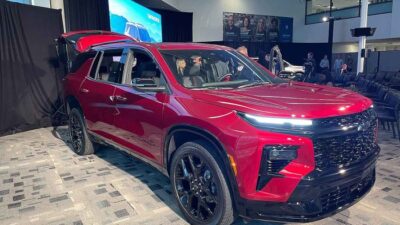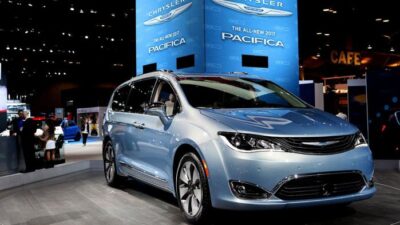Fuel-Efficient Family Cars 2025 sets the stage for a revolution in the automotive industry, promising a blend of sustainability, efficiency, and innovation. Get ready to explore the future of family vehicles like never before.
Delve into the world of hybrid vs. electric models, cutting-edge engine technologies, and the impact of design on fuel economy. Brace yourself for a journey towards a more eco-friendly and cost-effective driving experience.
Overview of Fuel-Efficient Family Cars in 2025: Fuel-Efficient Family Cars 2025

As we look ahead to 2025, the landscape of fuel-efficient family cars is rapidly evolving to meet the growing demand for environmentally friendly and cost-effective vehicles. With advancements in technology and an increased focus on sustainability, the automotive industry is making significant strides in improving fuel efficiency for family vehicles.
Current Landscape of Fuel-Efficient Family Cars
In recent years, there has been a noticeable shift towards hybrid and electric vehicles in the family car market. Manufacturers are offering a wider range of fuel-efficient options to cater to eco-conscious consumers. Models like the Toyota Prius, Honda Insight, and Chevrolet Bolt are gaining popularity for their impressive fuel economy ratings.
Importance of Fuel Efficiency in Family Vehicles
Fuel efficiency is crucial for family vehicles as it helps reduce overall fuel costs, lower greenhouse gas emissions, and minimize the environmental impact of daily commutes and road trips. Families often prioritize fuel efficiency to save money on fuel expenses and contribute to a cleaner and greener future for the next generation.
Projected Trends and Advancements in Fuel Efficiency for 2025, Fuel-Efficient Family Cars 2025
- 1. Enhanced Hybrid Technology: Manufacturers are expected to introduce more advanced hybrid systems that combine electric power with traditional gasoline engines to optimize fuel efficiency.
- 2. Increased Range for Electric Vehicles: Electric cars are projected to have longer driving ranges, making them a viable option for families looking to switch to fully electric vehicles.
- 3. Lightweight Materials: Car makers will continue to use lightweight materials like carbon fiber and aluminum to reduce the overall weight of vehicles, improving fuel efficiency without compromising safety.
- 4. Aerodynamic Designs: Vehicle designs will focus on aerodynamics to reduce drag and improve fuel economy, allowing family cars to travel farther on less fuel.
Hybrid and Electric Options

In the quest for fuel-efficient family cars in 2025, hybrid and electric options play a significant role. These vehicles are gaining popularity due to their environmentally friendly nature and cost-saving benefits.
Comparison of Hybrid and Electric Family Cars
When comparing hybrid and electric family cars in terms of fuel efficiency, both have their advantages. Hybrid cars typically combine a traditional gasoline engine with an electric motor, allowing for improved fuel economy compared to conventional vehicles. On the other hand, electric cars run solely on electric power, producing zero emissions and offering a sustainable driving solution. While hybrids offer a longer driving range and the convenience of refueling at gas stations, electric cars provide a quieter ride and lower maintenance costs.
Key Features and Benefits of Hybrid and Electric Models
- Hybrid Models:
- Regenerative braking system to recharge the battery while driving
- Ability to switch between electric and gasoline power for optimal efficiency
- Reduced emissions and improved fuel economy
- Electric Models:
- Zero tailpipe emissions for a cleaner environment
- Lower operating costs due to fewer moving parts and no need for gasoline
- Instant torque for a responsive and smooth driving experience
Impact of Hybrid and Electric Vehicles on the Environment
Hybrid and electric vehicles have a positive impact on the environment by reducing greenhouse gas emissions and dependence on fossil fuels. With advancements in technology and infrastructure, these eco-friendly cars are paving the way for a sustainable future. By choosing hybrid or electric family cars in 2025, consumers can contribute to a cleaner and greener planet for generations to come.
Innovative Engine Technologies

In the realm of fuel-efficient family cars in 2025, innovative engine technologies play a crucial role in enhancing performance and maximizing fuel economy. These advancements are key to achieving better mileage and reducing emissions, making them a significant focus for car manufacturers.
Turbocharging and Direct Injection
Turbocharging and direct injection are two key technologies that have become increasingly common in fuel-efficient family cars. Turbocharged engines use a turbocharger to force more air into the combustion chamber, allowing for more efficient fuel combustion and increased power output. Direct injection involves injecting fuel directly into the combustion chamber, resulting in better fuel atomization and more precise control over fuel delivery.
- Turbocharging improves engine efficiency by increasing power output without the need for a larger engine size, resulting in better fuel economy.
- Direct injection allows for more precise control over fuel delivery, optimizing combustion and reducing fuel consumption.
Variable Valve Timing
Variable valve timing (VVT) is another innovative engine technology that has become widespread in modern fuel-efficient family cars. VVT systems adjust the timing of the opening and closing of the engine’s valves based on driving conditions, optimizing engine performance and efficiency.
- VVT systems maximize fuel efficiency by ensuring that the engine operates at its peak performance levels under various driving conditions.
- By adjusting the timing of the valves, VVT systems improve combustion efficiency and reduce fuel consumption.
Cylinder Deactivation
Cylinder deactivation is a technology that allows an engine to shut off some of its cylinders when they are not needed, such as during light load driving conditions. This feature helps reduce fuel consumption by deactivating cylinders that are not necessary for maintaining vehicle speed.
- Cylinder deactivation improves fuel economy by reducing the workload on the engine when full power output is not required.
- By deactivating cylinders, the engine operates more efficiently, leading to better mileage in fuel-efficient family cars.
Design and Aerodynamics

When it comes to fuel-efficient family cars, design and aerodynamics play a crucial role in maximizing fuel economy. By optimizing the shape and structure of the vehicle, manufacturers can reduce drag and improve overall efficiency.
Aerodynamic Features in Family Cars
- Streamlined body: Family cars with sleek, aerodynamic shapes experience less air resistance, leading to improved fuel efficiency.
- Underbody panels: Adding underbody panels helps to reduce drag by smoothing out airflow underneath the vehicle.
- Rear spoilers: Integrated rear spoilers can enhance aerodynamics by managing airflow and reducing turbulence at the back of the car.
- Wheel designs: Aerodynamic wheel designs, such as covers or shapes that reduce air resistance, can contribute to better fuel economy.
Design Modifications for Fuel Economy
- Reduced weight: Lighter materials and efficient design choices can decrease the overall weight of the vehicle, enhancing fuel efficiency.
- Grille shutters: Adjustable grille shutters can control airflow through the engine compartment, optimizing aerodynamics for improved fuel economy.
- Side mirrors: Streamlined side mirrors or cameras can reduce wind resistance, positively impacting the vehicle’s efficiency.
- Body contouring: Carefully sculpted body contours and lines can help the vehicle slip through the air more smoothly, reducing drag and boosting fuel economy.
In a nutshell, Fuel-Efficient Family Cars 2025 paints a vivid picture of what’s to come in the realm of family vehicles. As we gear up for 2025, expect a shift towards smarter, greener, and more fuel-efficient cars that cater to both your family’s needs and the planet’s well-being.



